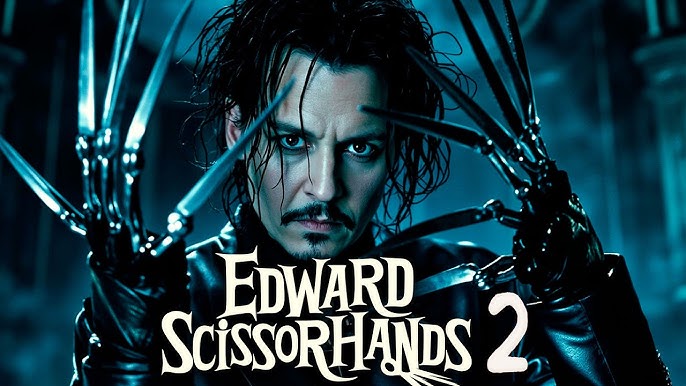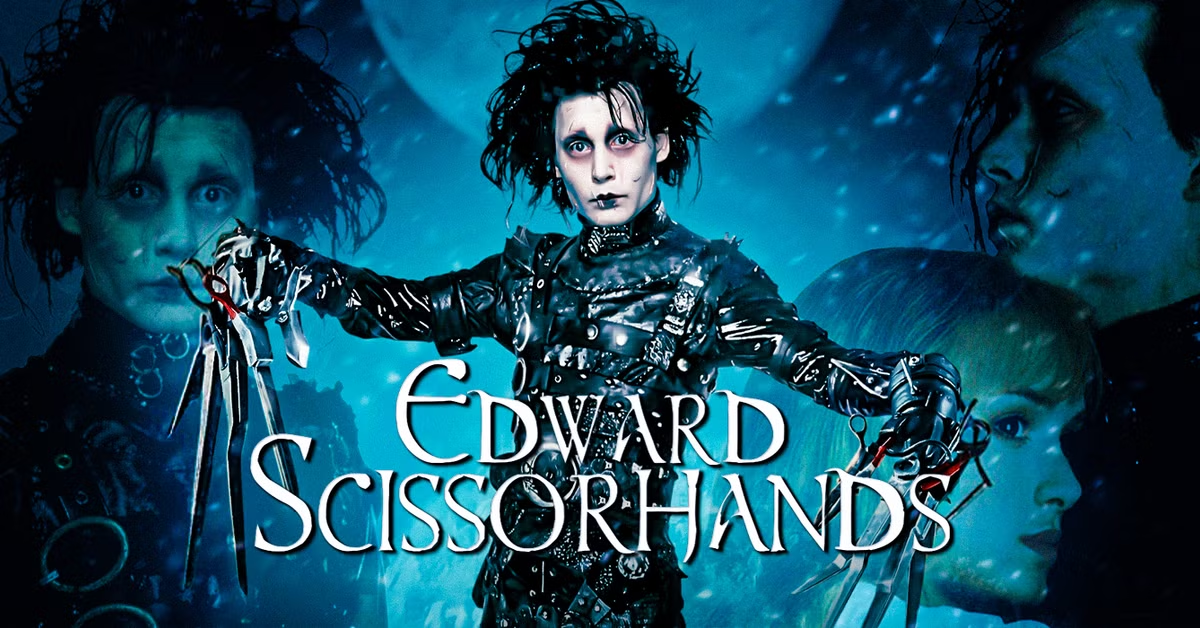Edward Scissorhands 2 (2026) – The Shape of Memory

Edward Scissorhands 2 (2026) arrives as a hauntingly beautiful continuation of Tim Burton’s most delicate fable — a melancholic dream about love, loss, and the aching passage of time. Directed by Burton himself, the film revisits Edward’s world not to repeat it, but to reflect upon it. It is both a sequel and a requiem — a story about creation’s loneliness, art’s endurance, and the way memory can carve us just as deeply as any blade.
The story begins decades after the original. The pastel suburbs that once rejected Edward have decayed into modern sterility — lifeless glass, steel, and silence. Hidden in the outskirts, Edward (Johnny Depp) lives in solitude, surrounded by frozen sculptures of angels, animals, and faces that time has eroded. His only visitor is Ava (Mia Goth), a young architect who stumbles upon his home while researching lost American gothic design. In Edward, she sees not a monster, but an artist the world forgot.
Johnny Depp’s return is restrained and devastating. Age has softened him but deepened his melancholy. His Edward no longer dreams of belonging; he carves to remember. Every creation is a fragment of Kim (Winona Ryder), whose absence lingers like winter air. When Ava discovers Kim’s old journal hidden among the sculptures, she becomes the bridge between Edward’s past and the world he abandoned. Depp’s performance — silent, tender, and trembling — is among his finest, each glance a lifetime of unspoken grief.
Mia Goth’s Ava radiates compassion and curiosity, a mirror to Kim’s youthful wonder yet shaped by a harsher world. Her belief in Edward reignites his dormant hope. She brings him sketches of cities craving warmth, asking him to help design gardens that could “let people breathe again.” Together, they begin sculpting something new — not just art, but connection.
Burton’s direction is masterful, weaving surrealism with sincerity. The visual palette evolves from candy-colored suburbia to weathered hues of decay and rebirth. Cinematographer Bruno Delbonnel bathes Edward’s mansion in silver-blue moonlight, while the new cityscapes pulse with sterile neon. The contrast — mechanical modernity versus handcrafted magic — becomes the film’s soul.
The antagonist emerges not as a villain, but as progress itself. The corporation backing Ava’s project seeks to replicate Edward’s work through synthetic AI — machines that sculpt without heart. When they discover Edward’s existence, they see not an artist, but intellectual property. The conflict between creation and imitation, soul and circuitry, gives the film its moral weight.
The score by Danny Elfman is a masterpiece of nostalgia and sorrow. Familiar choral melodies return like whispers from the past, woven into new compositions of strings and hollow bells. The main theme, “Hands of Memory,” swells in the film’s quietest moments — Edward trimming a dying tree, snow falling from his blades, Ava watching in awe. The music feels like winter remembering spring.
Thematically, Edward Scissorhands 2 is about impermanence — the idea that beauty must fade to stay pure. Edward’s creations melt, break, or are stolen, yet he never stops carving. “Everything I make,” he signs to Ava, “is already leaving me.” The film reflects on art’s fleeting nature in an age of replication — a bittersweet elegy for imagination in a digital world.
The climax unfolds as Edward is hunted once more, this time by those who seek to extract his DNA to mass-produce his “gift.” In a breathtaking sequence, he releases his final work: a colossal ice garden that blooms under moonlight, filling the sky with snow. As he stands within it, his body begins to freeze — not in death, but in transformation. He becomes part of his creation, his blades outstretched like wings of frost.

The final scene is silent. Ava returns years later to find the garden buried beneath time. The world has changed again — faster, colder — but as she touches a frozen sculpture shaped like a heart, snow begins to fall once more. Somewhere, Edward still lives in the memory of what he made.
Edward Scissorhands 2 (2026) is a work of cinematic grace — mournful, poetic, and profoundly human. It doesn’t try to replace the original’s magic; it extends its breath. Through love, art, and solitude, it reminds us that creation is the truest act of memory — and that even in silence, the heart keeps carving.
Snow isn’t weather.
It’s what love leaves behind. ❄️
Related movies :
Related movies :
Related movies :
https://youtu.be/wBF33mtj2ig?si=YXDQqSvh_TrSIA2a
Related movies :
Related movies :
Related movies :











